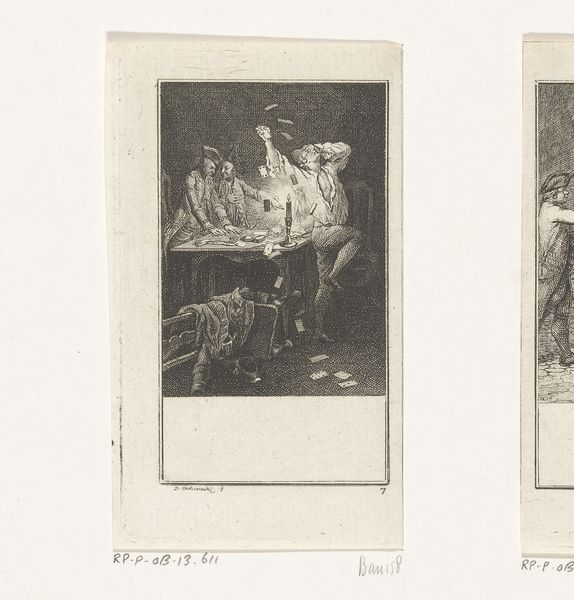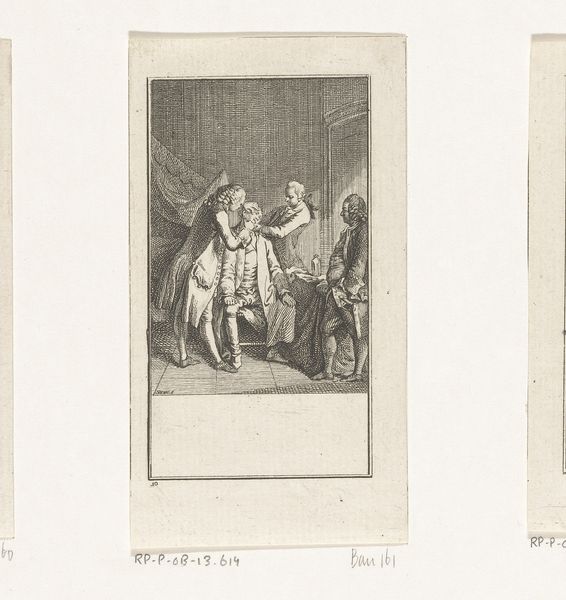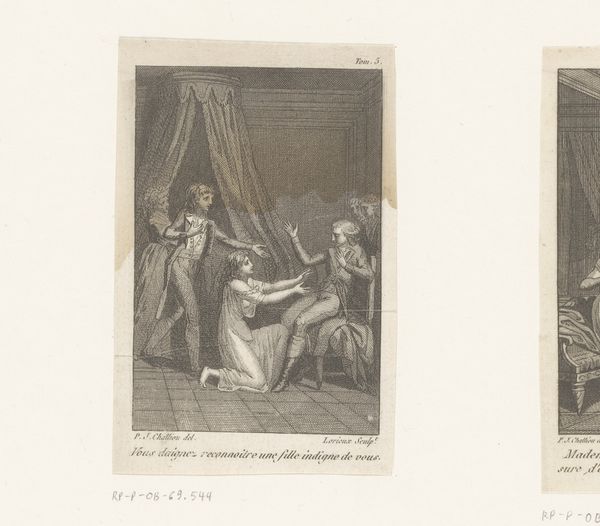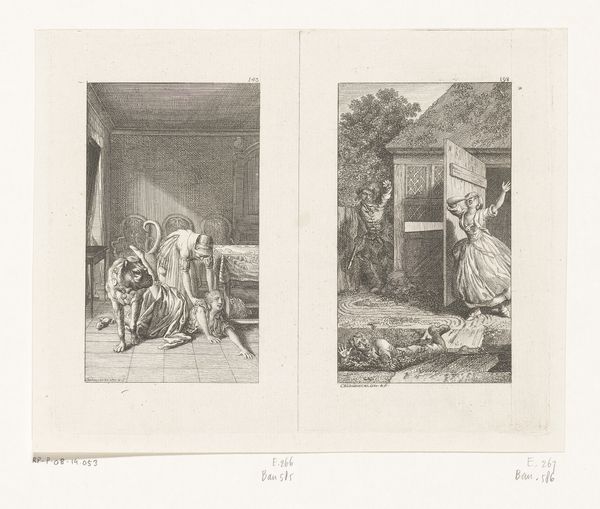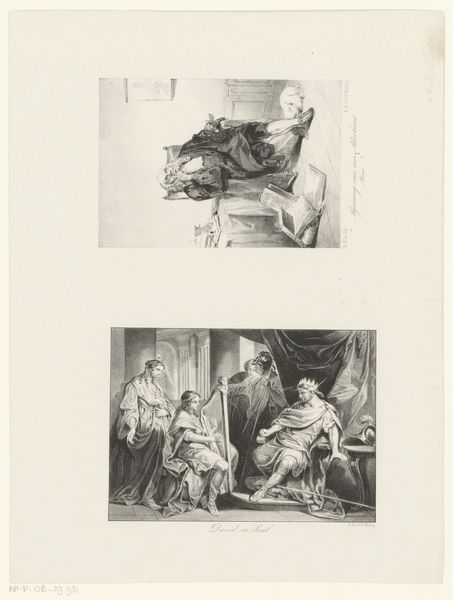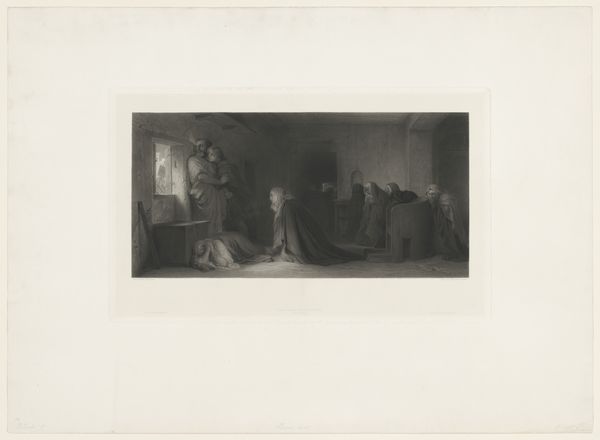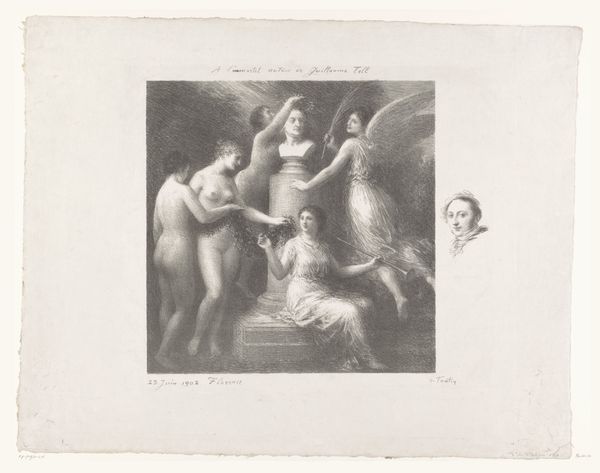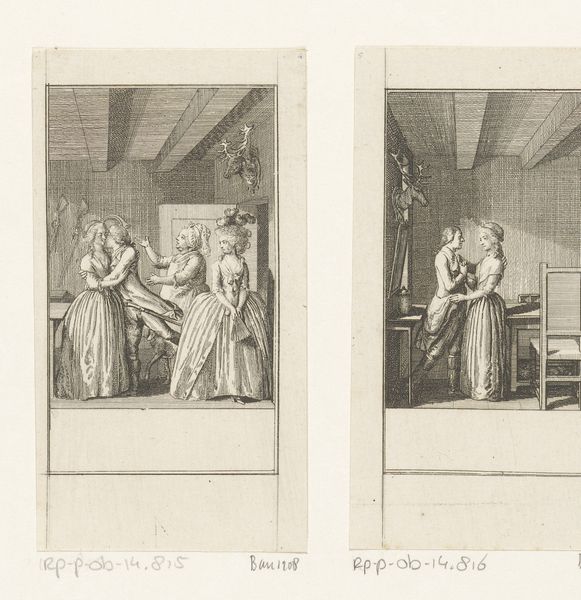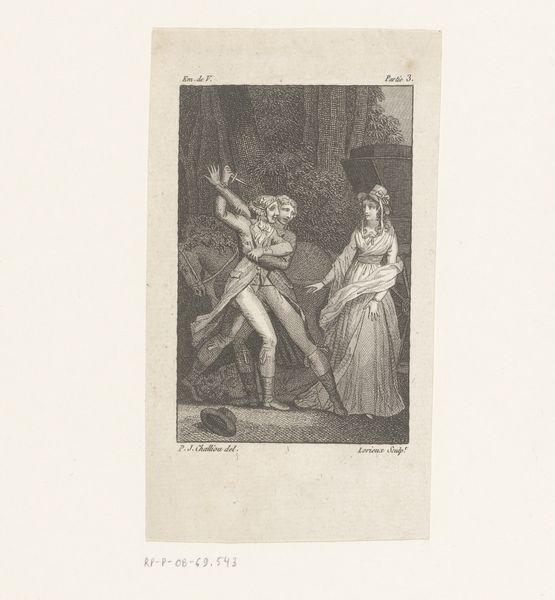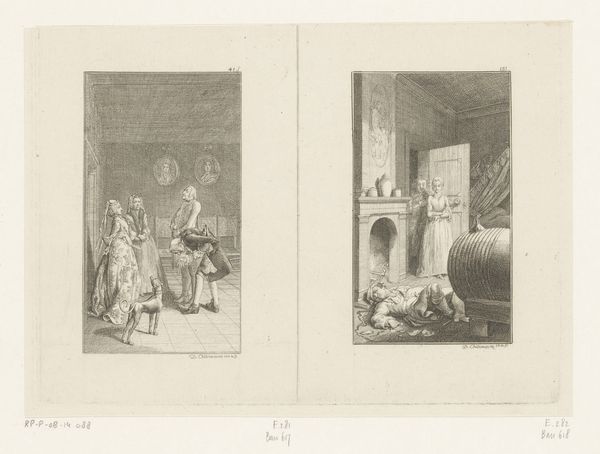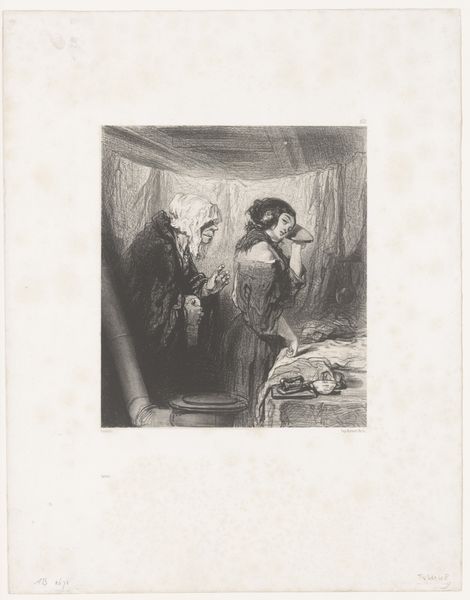
Vrouwen bij het graf van Christus - Vrouw met boek 1842 - 1873
0:00
0:00
Dimensions: height 170 mm, width 251 mm
Copyright: Rijks Museum: Open Domain
Curator: This is Dirk Jurriaan Sluyter’s diptych, "Women at the tomb of Christ - Woman with book," made between 1842 and 1873. It resides here at the Rijksmuseum. Editor: It strikes me as rather stark. The greyscale engraving creates a mood that's almost somber. Curator: It’s interesting that you use that word—"somber." One side depicts a religious scene: the women discovering Christ’s empty tomb. The other shows a lone woman, absorbed in reading. How do these images interact, what narratives might emerge from the juxtaposition? Editor: Formally, it's a clear division. The biblical scene, staged outdoors, employs dynamism through gestures and billowing drapery, creating the effect of dramatic storytelling. Whereas, the domestic scene relies on interiority and stillness. Curator: Indeed. The "history-painting" alludes to powerful, often male-centered biblical stories, but notice it's centered on women at a pivotal moment of religious history, when their perspectives are often sidelined or erased. What commentary is offered when the piece is viewed through a feminist lens? How is women's faith, spirituality, and intellect framed during that era? Editor: I am struck by how each scene seems to balance drama with quiet introspection. There's a conscious ordering of tonal values. A real study in composition and how visual elements guide your attention. Curator: I agree; however, the woman's solitary act of reading challenges social constraints imposed on women at the time. Her engagement with knowledge is subversive, suggesting that enlightenment is not only confined to holy texts but could occur via education. Perhaps through examining how social expectations were being defied and re-defined. Editor: The contrasting settings give the image an intellectual tension and offer varied insight when viewers allow themselves to investigate this unique artwork in-depth. Curator: Thank you. These juxtapositions are where the work's significance resonates—offering perspectives into gender, faith, and social progress. It presents compelling insights.
Comments
No comments
Be the first to comment and join the conversation on the ultimate creative platform.

